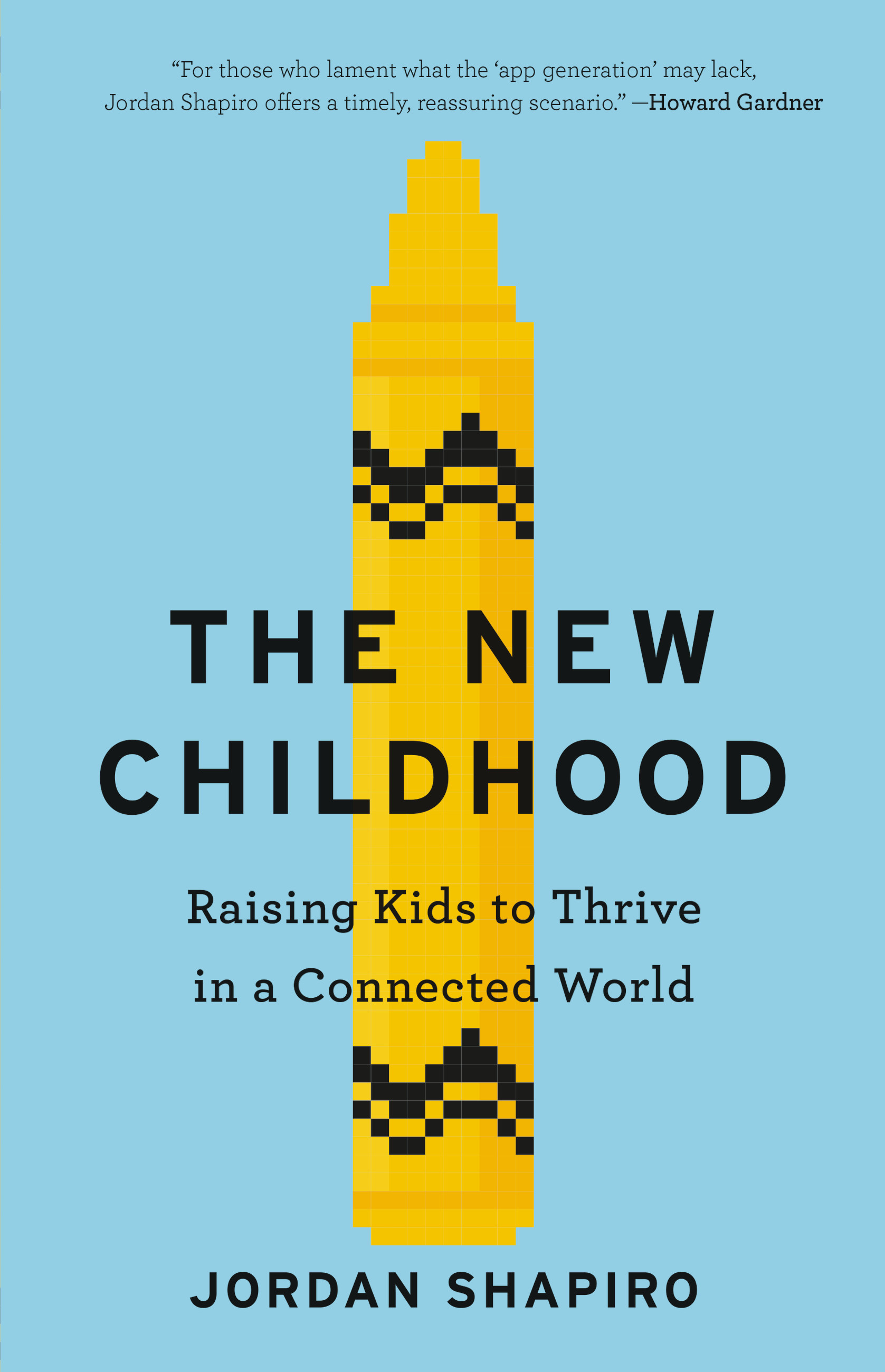Our kids are playing the world’s most complex game of Broken Telephone. And they will need to know that hearing is not the same thing as listening, especially when we’re gossiping with hyperconnected digital tools.
To accurately transform whispered data into information and knowledge, they’ll need to understand rapidly changing geopolitical climates. To find productive ways to contribute to a globalized economy, they’ll need to see themselves as stewards of an interconnected worldwide community. The new context requires them to be open-minded, tolerant, and respectful of diversity. But for that, they need a fortified sense of self — enough confidence to manage the muddy ambivalence of persistent connection. They need to know how to maintain distinct and individual ways of being while simultaneously adopting standardized and uniform means of communication. They need to preserve distinct family and cultural value systems while also embracing the nebulous and vague realities of a connected world. It’s about letting the hearth inform the agora. And this is the foundation of a new kind of empathy.
The empathy with which we’re all familiar is a twentieth-century invention. The word is derived from ancient Greek roots, but it wasn’t coined until 1909. Psychologist Edward Titchener used it as a translation for the German term Einfühlung, which means “feeling into.” At first, empathy was described in terms of “motor mimicry” — the physical reaction to other people’s sensory stimuli. When I cringe because my son skins his knee, or smile when he’s happy about an impressive achievement, it’s what early philosophers described as motor mimicry. I project my own feelings onto his experience. I observe physical cues, such as facial expressions, and then I imitate his inner state.
Similarly, in the 1990s, neuroscientists working with macaque monkeys discovered that identical brain activity can happen in response to someone else’s physical actions. The theory is that if I’m watching you eat hummus and pita, some of my synapses will be identical to yours, even if I’m not eating anything. Mirror neurons will fire for both subjects and observers simultaneously. I don’t have to think or try to make it happen; it’s automatic. It’s not based on my intellectual capacity to recognize and reflect on how we’re alike, so it’s called prereflective mimicry.
At first, researchers believed that mirror neurons could explain social empathy. They speculated that we were inclined toward species connection because mirror neurons allow us to recognize the essential similarities that make all humans alike. But so far, the evidence is shaky. We’re not even sure that humans have the same mirror neurons as macaque monkeys. Neuroimaging has consistently mapped behaviors and responses that tend to be associated with empathy to activity in specific regions of the brain. However, researchers haven’t yet been able to reproduce conclusive evidence that the subjective, or first-person, experience of pain actually activates the same regions of the human brain as the objective, or third-person, experience of observing another’s pain. So, this evidence is hardly conclusive.
The problem is likely that the concept of empathy cannot be clearly defined. It’s dependent on context. Social and cultural factors determine what kinds of behavior we consider to be empathetic. And the most common understanding of empathy continues to draw its philosophical framework from the Industrial Age concept of Einfühlung, a notion that was always linked to the predominant technologies of the late nineteenth and early twentieth centuries. Back then, scientists and natural philosophers were gripped by enlightenment ideas that originated around the 1500s, when New- ton, Copernicus, Galileo, and Descartes introduced “empiricism.” Borrowing the word from the Greek ε’ μπειρικοʹ ς (empeirikos) — which means “experienced” — they saw a universe that could be described as consisting of discrete units that interact through observable cause-and-effect relationships: laws of nature that operate in efficient linear sequences, like the cogs in a clock tower.
Empiricism works very well when we’re describing physical events. Gravity, velocity, and acceleration are all obvious when we’re watching objects in motion. But what about feelings? Like love.
Rage. Compassion. Admiration. Desire. What causes the sensations that accompany these emotional responses? One can’t see gear- wheels turning in my head when I get a warm and fuzzy feeling while admiring the beauty of a sunrise or a painting at the Guggenheim. There’s no direct line to draw between the soloist performing Sibelius’s violin concerto and the goose bumps that form on the back of my neck at the end of the second movement. Still, these sensations are just as valid as the pain I feel when someone pinches my arm. Our experience of nontangible aesthetic stimuli is just as real as our experience of physical or mechanical stimuli. Back in 1905, Bavarian philosopher Theodore Lipps wanted to explain how these ephemeral, or affective, sensations could fit into an empirical conception of the universe. So, he wrote about “empathy.” He argued that a subject always sees a little bit of herself in the object she perceives, and that leads to a kind of internal or emotional motor mimicry. When I’m standing at the Guggenheim, Lipps theorized, I’m able to appreciate the art because I “feel into” the object and imagine the artist’s experience must be like my own.
Our current use of the term “empathy” is still very much akin to Lipps’s original. We use the word to describe one’s capacity to see, feel, or understand how things might be experienced from another person’s perspective. And we continue to look for empirical evidence that Lipps’s general framing is accurate. We’ve also incorporated the presumption that empathy is always good because it supposedly automatically triggers compassion and kindness, a concern for other people’s well-being. This is what psychologist C. Daniel Batson calls the empathy-altruism hypothesis. But even this becomes problematic when we take cultural context into account. For instance, research has shown that folks tend to have more empathy for loved ones. And one neuroimaging study even found that Red Sox and Yankees fans feel sadness when their own team strikes out but experience pleasure in response to their rivals’ failure. Both are empathetic reactions. One is compassionate, the other aggressive.
Still, the idea that empathy is inherently positive drives a lot of social theories. For instance, Jeremy Rifkin describes empathy as the driving force of human civilization. “Empathic development and the development of selfhood go hand in hand,” he writes, “and accompany the increasingly complex energy-consuming social struc- tures that make up the human journey.” Rifkin sees empathetic camaraderie, rather than competition and survival, as the primary motivating factor behind social progress, economic development, and technological innovation. He assumes that because I can imag- ine how your suffering feels, I’m inclined to do what I can to mini- mize it. Therefore, I contribute to my community because I recognize that cooperative projects might eliminate the pain I can imagine feeling. Rifkin even takes this thesis to an Age of Aquarius extreme, predicting that the technologies of a connected world will eventu- ally catalyze a new form of empathic consciousness — one that ele- vates species solidarity above national, ethnic, or regional factionalism.
But don’t tell that to twentieth-century philosopher Martin Buber, a popular religious thinker, political activist, and educator. He’s most famous for his 1923 book I and Thou. And even though his work elevated loving, compassionate human interactions and relationships as the foundation of a meaningful existence, he resisted the very idea of empathy. Why? Because for him, the concept still retained too much of its original motor-mimicry meaning, even in its later iterations. Empathy is “the absorption in pure aestheticism,” he wrote, by which he means it’s all about sensation, about experiencing things the same way another person does, about seeing things through their eyes. “Empathy means, if anything, to glide with one’s own feeling into the dynamic structure of an object,” Buber explains.
From his point of view, it’s not a true interpersonal connection because, in empathy, we leave ourselves behind to occupy the perspective of another. “It means the exclusion of one’s own concreteness,” he says.
That’s his poetic way of describing what I was referring to with the Play-Doh problem. When we try to see through someone else’s eyes, we find ourselves in an anxiety-provoking situation. We intuitively recognize that perfect empathy — lauded as an aspirational ideal — requires letting go of our identities completely, forgetting all of our own experiences, suspending a lifetime of memories, and abandoning everything we’ve learned about situational meaning- making. In other words, it involves momentarily weakening our sense of self. And therefore, it feels inherently destabilizing.
Think about how often this uneasiness manifests itself in a connected world. We are confronted with access to so many different perspectives. We’re constantly barraged with opportunities for empathy. All day long there’s moral and ethical pressure to abandon ourselves and feel into the experience of others. But by definition, that means we also spend a lot of time being like brownish-gray lumps of modeling clay — dissatisfied, with a vague and indeterminate sense of self. To make matters worse, we’re also probably racked with guilt and shame because we’ve bought into an Industrial Age conception of empathy as altruism that’s misaligned with our current technological reality. Einfühlung is creating personal anguish rather than reducing collective suffering.
Hence, we need to reimagine empathy for a connected world.

Excerpted from THE NEW CHILDHOOD Copyright © 2018 by Jordan Shapiro. Used with permission of Little, Brown and Company, New York. All rights reserved.
Follow us here and subscribe here for all the latest news on how you can keep Thriving.
Stay up to date or catch-up on all our podcasts with Arianna Huffington here.


